481-42-5
| Name | plumbagin |
|---|---|
| Synonyms |
2-Methyljuglone
5-hydroxy-2-methyl-[1,4]naphthoquinone 2-methyl-5-hydroxy-1,4-naphthalenedione Plumbagine EINECS 207-569-6 Plumbagin from Plumbago indica 2-Methyl-5-hydroxy-1,4-naphthoquinone Plumbagin 5-hydroxy-2-methyl-1,4-NQ Plumbagone Plumbaein 5-hydroxy-2-methylnaphthalene-1,4-dione MFCD00001682 5-hydroxy-2-methyl-1,4-naphthalenedione 5-Hydroxy-2-methyl-1,4-naphthoquinone |
| Description | Plumbagin (2-Methyljuglone) is a naphthoquinone isolated from Plumbago zeylanica L, exhibits anticancer and antiproliferative activities[1]. |
|---|---|
| Related Catalog | |
| In Vitro | Plumbagin (0, 5, 10, and 15 μM) induces apoptosis of prostate cancer cell lines, such as DU145, CWR22rv1 and LNCaP, in a dose-dependent manner[1]. Plumbagin (5, 20 μM) obviously inhibits the invasion of PC3, DU145, and CWR22rv1 cells[1]. Apoptosis Analysis[1] Cell Line: DU145, CWR22rv1, LNCaP and RWPE-1 cells Concentration: 0, 5, 10, and 15 μM Incubation Time: 24 hours Result: Dose-dependently induced apoptosis of DU145, CWR22rv1 and LNCaP, but showed no effect on RWPE-1 cells at up to 20 μM. |
| In Vivo | Plumbagin (2 mg/kg, i.p., five days a week for 11 weeks) inhibits the growth of tumor in male athymic nude mice[1]. Plumbagin (2 mg/kg, i.p., five days a week for 11 weeks) inhibits expression of PKCε, suppresses JAK-2 and Stat3 phosphorylation, and activates Stat3, PCNA, VEGF and MMP-9 in mice[1]. Animal Model: Male athymic nude mice bearing DU145 cells[1] Dosage: 2 mg/kg Administration: I.P. after 3 days post cell implantation, five days a week. Result: Delayed tumor growth by 3 weeks, and reduced tumor weight and volume in mice. |
| References |
| Density | 1.354g/cm3 |
|---|---|
| Boiling Point | 383.9ºC at 760 mmHg |
| Melting Point | 76-78ºC(lit.) |
| Molecular Formula | C11H8O3 |
| Molecular Weight | 188.17900 |
| Flash Point | 200.2ºC |
| Exact Mass | 188.04700 |
| PSA | 54.37000 |
| LogP | 1.71750 |
| Vapour Pressure | 1.92E-06mmHg at 25°C |
| Index of Refraction | 1.63 |
| Storage condition | −20°C |
CHEMICAL IDENTIFICATION
HEALTH HAZARD DATAACUTE TOXICITY DATA
MUTATION DATA
|
| Symbol |


GHS05, GHS06 |
|---|---|
| Signal Word | Danger |
| Hazard Statements | H301-H314 |
| Precautionary Statements | P280-P305 + P351 + P338-P310 |
| Personal Protective Equipment | Eyeshields;Faceshields;full-face particle respirator type N100 (US);Gloves;respirator cartridge type N100 (US);type P1 (EN143) respirator filter;type P3 (EN 143) respirator cartridges |
| Hazard Codes | T |
| Risk Phrases | R23/24/25 |
| Safety Phrases | 22-26-36/37/39-45 |
| RIDADR | UN 2923 8/PG 2 |
| WGK Germany | 3 |
| RTECS | QL8500000 |
| Packaging Group | II |
| Hazard Class | 6.1(a) |
| HS Code | 2914690090 |
| Precursor 6 | |
|---|---|
| DownStream 10 | |
| HS Code | 2914690090 |
|---|---|
| Summary | 2914690090 other quinones。Supervision conditions:None。VAT:17.0%。Tax rebate rate:9.0%。MFN tariff:5.5%。General tariff:30.0% |



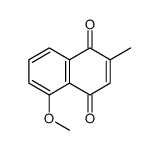
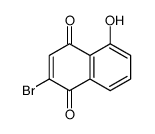
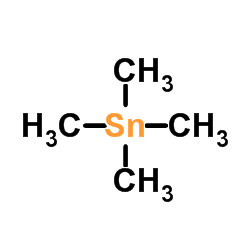
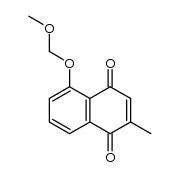
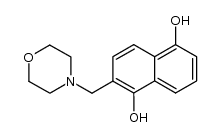
![[2,6-dimethoxy-4-methylphenyl]trimethylstannane structure](https://image.chemsrc.com/caspic/180/126421-39-4.png)
![3-hydroxy-7a-methyl-1aH-naphtho[2,3-b]oxirene-2,7-dione structure](https://image.chemsrc.com/caspic/151/188675-38-9.png)


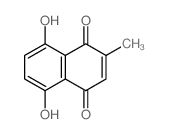

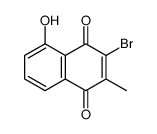
![5-methoxy-3-[2-(8-methoxy-3-methyl-1,4-dioxonaphthalen-2-yl)ethyl]-2-methylnaphthalene-1,4-dione structure](https://image.chemsrc.com/caspic/313/113720-10-8.png)
![3,6-dichloro-5-hydroxy-2-methyl-[1,4]naphthoquinone structure](https://image.chemsrc.com/caspic/312/57093-07-9.png)
